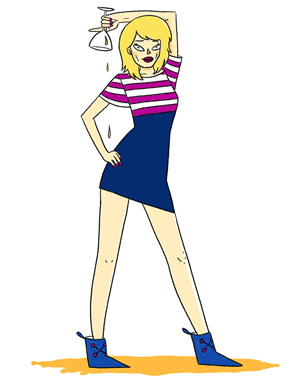Messing about on Lake Maggiore
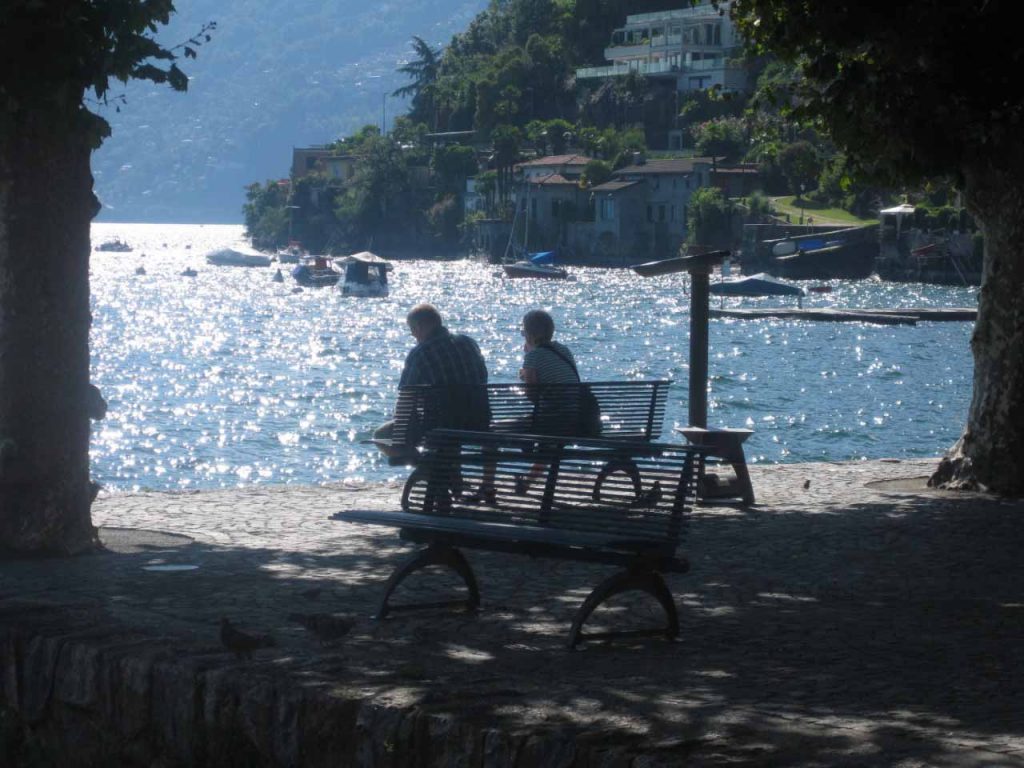
It may be just 7 miles as the crow flies from Lake Orta to Lake Maggiore but there is the small matter of an intervening mountain range, albeit a minor one. Fortunately the winding route was tame in comparison with the torturous roads I had driven in the Provincial Alps in July, with no single lane nonsense or perilous ‘drop offs’ which had me in a cold sweat. As if we’d opened a page from Heidi, cows grazed peacefully in the Mount Mottarone’s meadows and soon the road snaked down past chest beating villas into Stresa.
After the tranquility of San Giuillo, Stresa, the most popular resort on Lake Maggiore, bustled with activity. It mixes slightly tatty tourism with grand hotels, great bastions of the late Grand Tour. The Grand Hotel des Iles Borromees is the Grand Dame – still waving the flags for C19th pomp and circumstance and a favourite of Earnest Hemingway.
The hey day for Stresa came in the wake of the railway which bridged the Alps. By the 1920s travellers arriving on the Orient Express could stroll along the formal lake side promenade with its clipped lawns and palm trees and enjoy the glittering lake (it really does shimmer!) and the dramatic mountain scenery which the romantic poets so admired. These days the striking blue waters are busily criss crossed with boats plying between the lakeside towns and islands.
Three small islands lie in the Golfo de Borromeo, named after the Borromeo family who were movers and shakes in these parts. This aristocratic family were responsible for the beautiful gardens we had come to visit on two of the islands (more about those in the next blog).
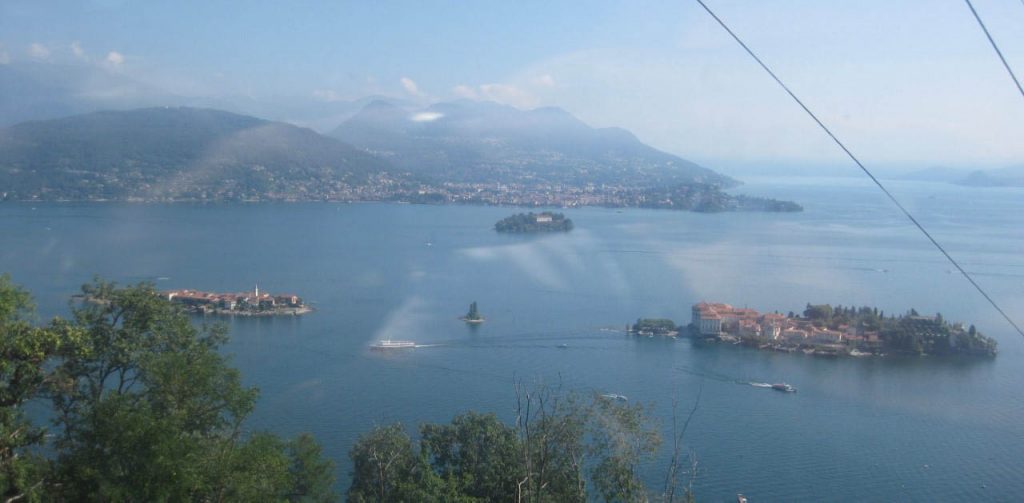
We hopped on a ferry to the third island, Isola Superiore dei Pescatori or fisherman’s island where we would be based for several nights. It’s a tiny island of simple, picturesque houses. They shoulder together seemingly looking outwards to the lake, but the main doors face along a small cobbled alley to protect them from flooding. Small blue fishing boats still use the little harbour, although today the island is mainly given over to restaurants and teams with tourists during the day who come to eat and swim.
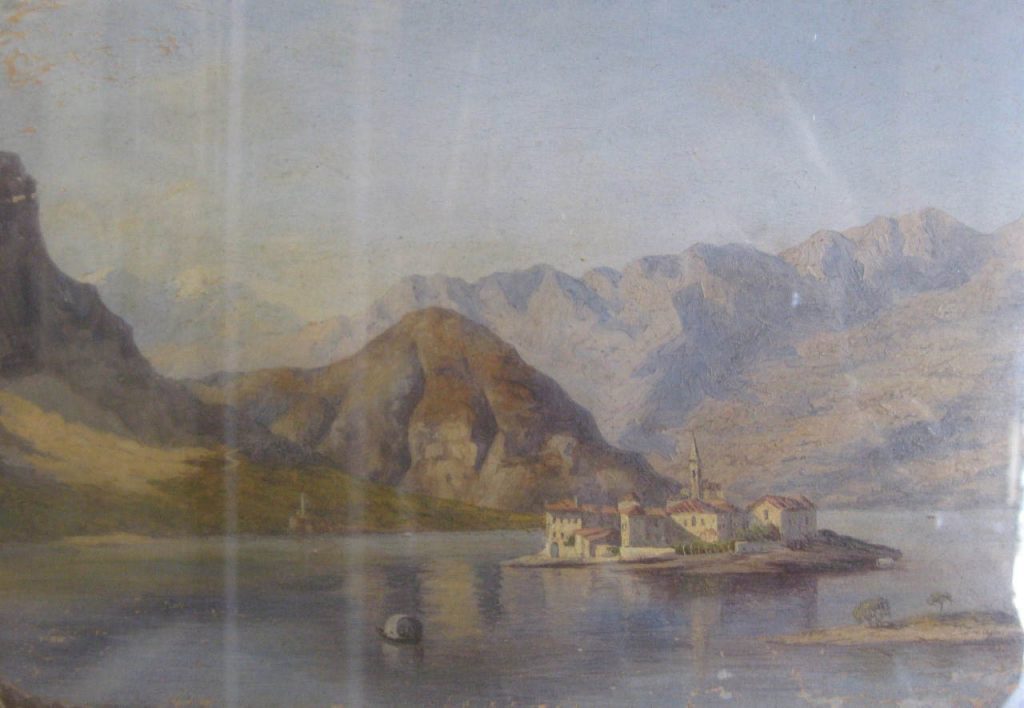
It is beautiful after 7pm when the speedy public ferry stops and the pace slows and there is plenty of room in the restaurants enjoy the view. At night the lapping water is a peaceful lullaby, but for the English Nose – an habitual early riser, it is at its best as the sun rises swiftly from behind the mountains in a rich orb which infuses the lake in a gorgeous pink glow.
It’s an inescapable fact – if you are staying on an island you must take a boat to go anywhere. We parted with E83 for a 7 day boat pass, which caused never ending amusement for the ferry men, who would comment merrily, “What’s this?” peering closely. “Goodness it’s a holiday pass – never seen one of those before! Fabrizio – you’ll never guess… she’s got a holiday pass. Take a look!” Well, clearly we were the only suckers that summer, but it was worth it to avoid the hassle of continually buying tickets… and we made full use of the pass heading off to explore the lake before the visitors descended on Pescatori.
Without doubt my favourite lakeside town is medieval Cannobio, small, smart and colourful with sturdy stone houses and cobbled street which rise steeply from the harbour. It’s packed with interesting shops. The mighty Santuario della Pieta with its delightful hexagonal tower is moored like a galleon on the cobbled quayside. It was commissioned in the C16th by Cardinal Carlo Borromeo to give thanks for sparing the village from plague. To one side are deep, cool arcades lined with cafes. It’s excellent for lunch or for an early aperitivo while you are waiting for the last boat back. (It would make lovely base for a few days). The second inescapable fact of staying on Piscatori is the 7 pm curfew, unless you have a private boat… something tricky to squeeze onto Easy-Jet.
As this is a wine blog, here at least is a wine ‘aside.’ This wine and olive press – good for the olives, less so for wine – is dated 1671. It’s in the convent of Santa Caterina del Sasso, which is built into the rock face on the opposite shore to Stresa. It started as a hermitage in 1170 – the embalmed hermit is still in residence – and has some lovely frescoes.
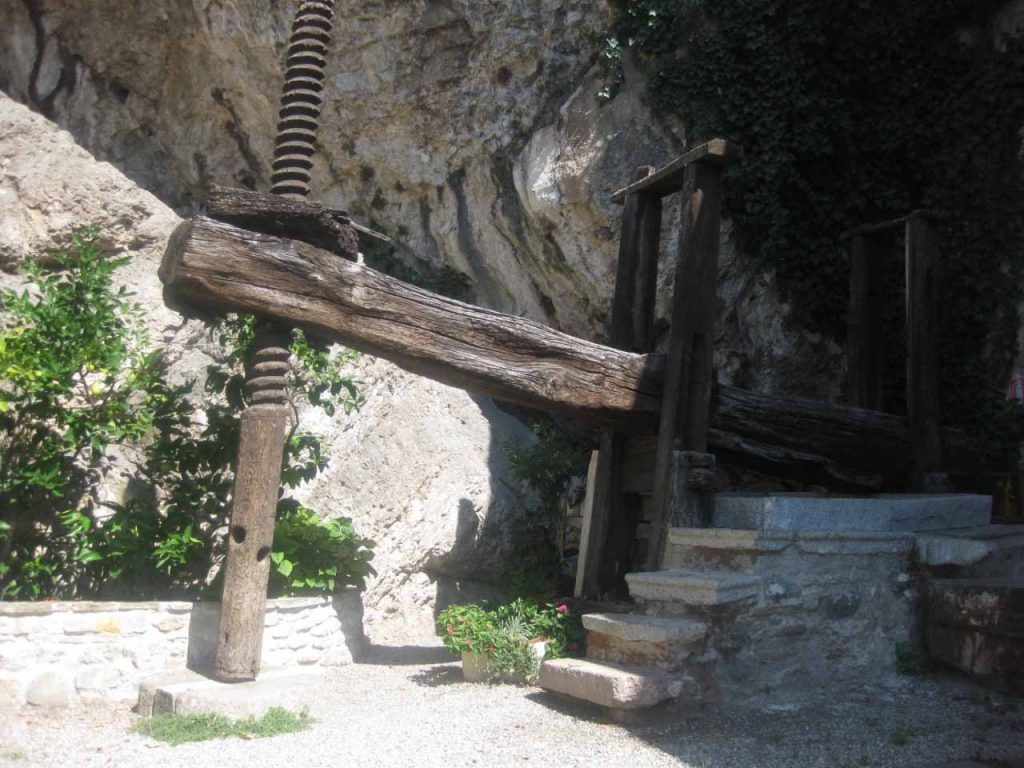
Lake Maggiore disappears between the mountains into the hazy blue distance like a sea and just out of sight it crosses into Switzerland. We decided to try the round trip touted as the Lake Maggiore Express. We took at train to Domodossola disembarking for an expresso and cake. In retrospect Domodossola is best place on route – if only the Nose had nosed that out in advance, we would have happily stayed put for the day! However we hopped on the Cenovalli Railway which chugs its way very slowly through the mountains, over some impressive gorges, past waterfalls and though forests to Locarno at the top of the lake.
We both turned up our noses at the sprawling, largely modern resort and jumped on a ferry to charming town of Ascona. The boat back was more like a mini cruise liner. With the slow surge and low hum of the engines it was strangely up lifting standing on the lofty sun deck enjoying the breeze and the sun’s setting rays as the day drew to a close.
But not quite to a close… for this was the night of Ferragosto. The giant boat deposited us on our island, all but washing it away. We had time to share a bottle of Prosecco as darkness fell, while keeping an eye on the activity in the neighbouring church. When the special mass came to an end, we sprung out as the Madonna was hoisted aloft by several of the 50 or so remaining islanders, and joined the throng with a goodly number of curious tourists.
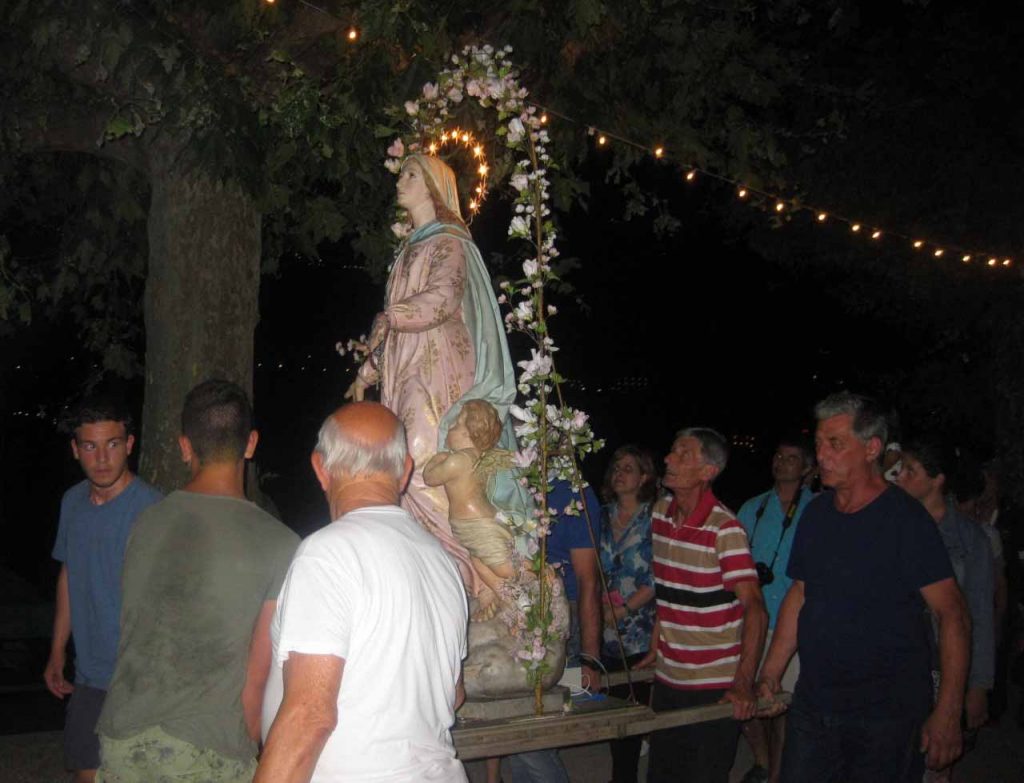
The brass band led the way as we processed, with singing of sorts, around the island. With a worrying wobble the Madonna was lowered onto a boat festooned with flowers and set off, followed by a ribbon of fishing boats decorated with swags of pretty lights. They made their way around the island before she was carried back to the lovely little C12th church. Here a choir were waiting up above and heralded her return in a more celestial voice, followed by a final blessing by the priest. I thought it was a wrap, but the brass band outside then broke into a very jolly concert of their own.

